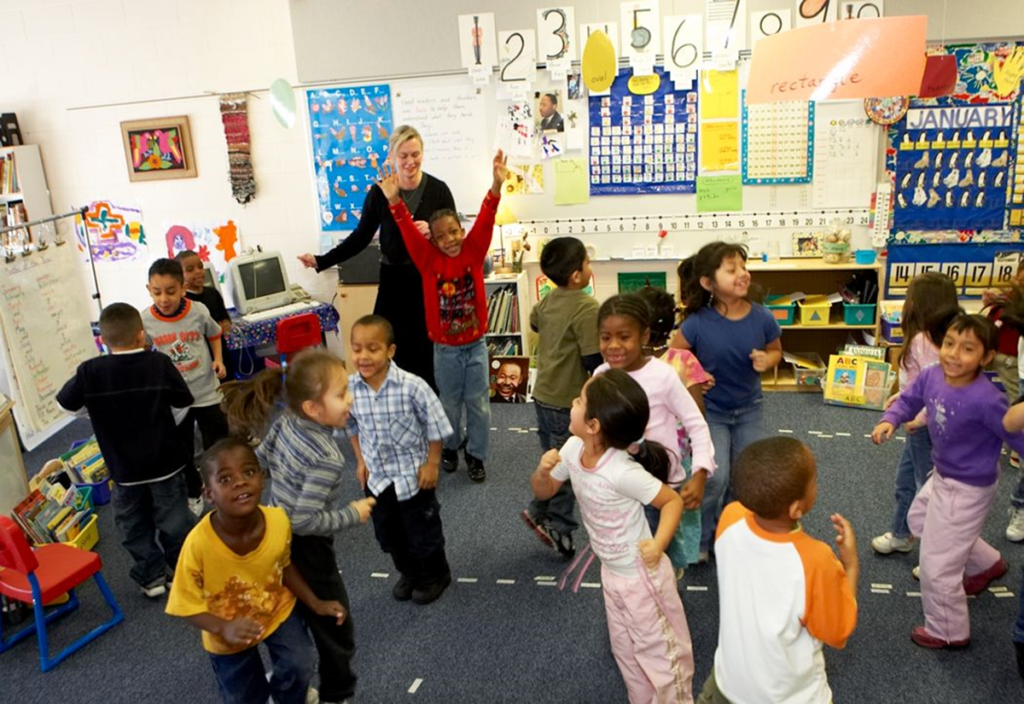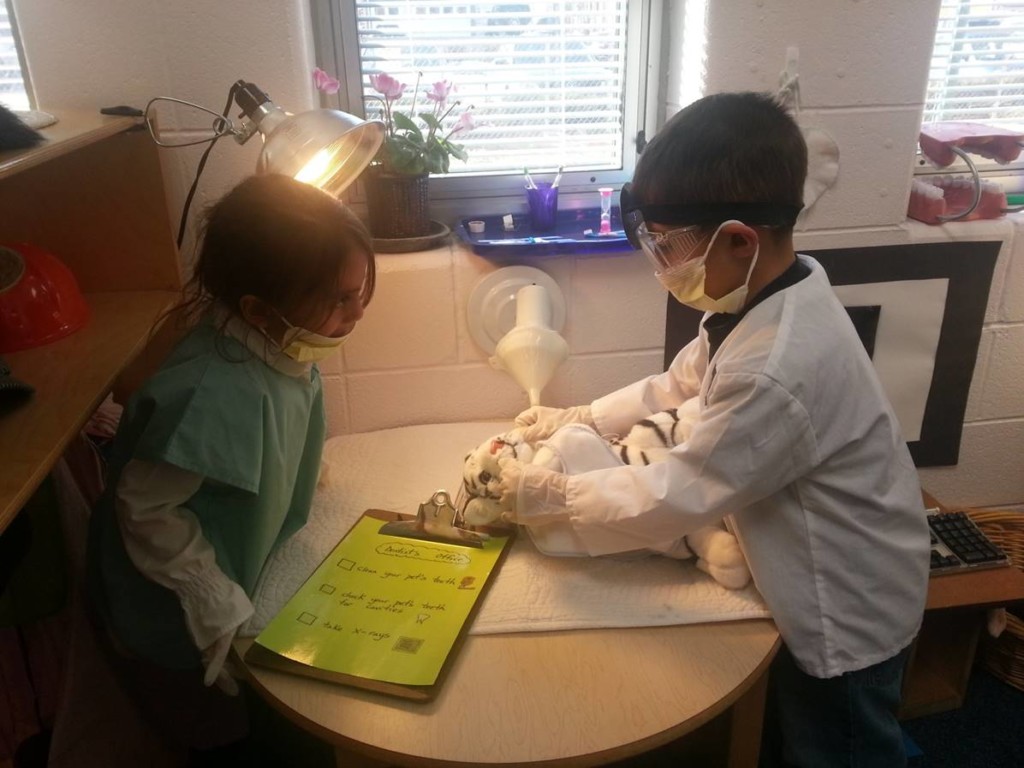In my early years of teaching young children, I discovered the minute I began singing or clapping rhythmically children would gaze up at me with their adoring eyes, focused and engaged. I had them in the palm of my hands. It was calming, effortless. They were smiling, happy, and so was I.
It wasn’t until after a great deal of self-reflection that I realized there were so many other opportunities to capitalize on this innate love. It was a process that unfolded over time.
At first I used songs connected to holidays (e.g. Halloween, Valentine’s Day etc.), birthday celebrations, and nursery rhymes. Singing happened in my classroom, but it wasn’t intentionally woven into the day as a structure to support learning.
As a new teacher, I quickly realized children crave predictability. And, so I began our day, as we gathered as a group, with a “Good Morning” song. It was a simple beginning that established comfort, safety, and set the tone for our classroom community.
Songs and rhymes were gradually incorporated into the schedule to ease transitions (e.g. coming off the playground, returning from lunch, clean up from math, writing workshop, Play/Choice time etc.), bringing more focused energy to the community and adding enjoyment to our day.
Rhymes were also integrated on the playground as we jumped rope, bringing additional practice and familiarity with language and rhythm (See The Literate Kindergarten for more detail on rhythm/steady beat).
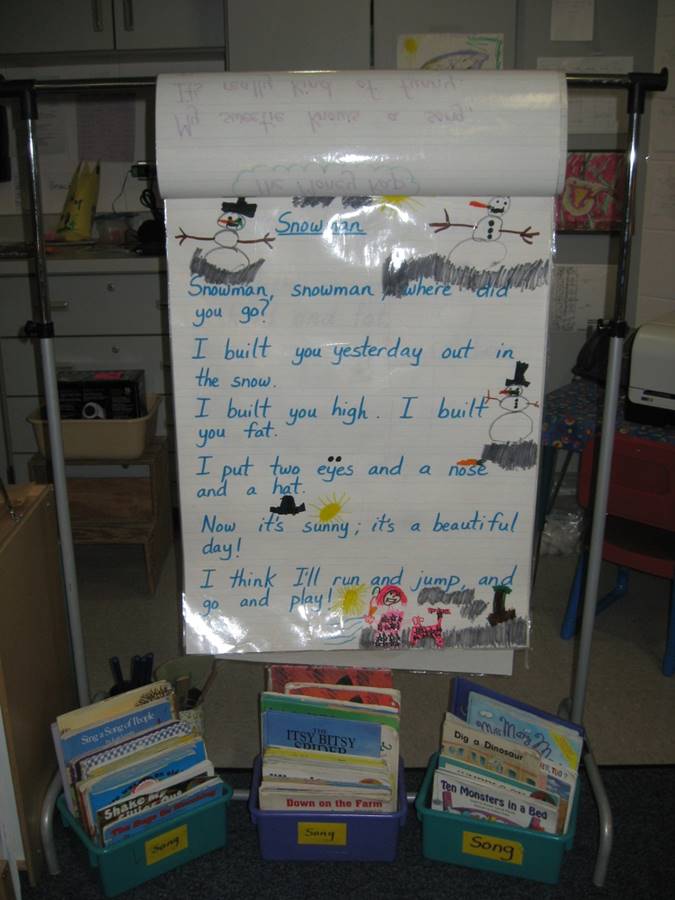
With time, I realized I could print these simple songs/rhymes, accompanied with a bright illustration by the children and me, on large chart paper, and laminate, so they could be revisited time and time again. This was the beginning development of one of my guiding principles: The Language Wheel – connecting Talk, Writing, and Reading.
It started with the “Good Morning” song (in English/Spanish), The ABC song, and nursery rhymes (e.g. “One, Two Buckle My Shoe”), and expanded to seasonal songs, poems, and simple songs I found on favorite CD’s. The key in choosing ones to chart were simplicity and ones of high interest to children so they could be reread independently.
Once the song chart was established, singing songs as a group morphed into a daily morning ritual, connecting our classroom community and providing a powerful context to strengthen literacy. One child had the job of “pointer,” tracking words with a rhythm stick as they modeled for others and learned how print moved on a page. You could frequently hear me reminding the children, “I want to hear you singing from your belly!”
As the year progressed, I added new lyrics to our repertoire and rotated favorite songs/rhymes/poems, adding variety and choice. Smaller laminated versions of some of the songs/rhymes (“Day of the Week,” “I’m a Rainbow,” “One, Two, Bubblegum Chew”) were placed in tubs labeled “Classroom Songs” and “Jump Rope Rhymes.” Children were encouraged to reread these during Choice Reading, first thing in the morning and during choice/play time in the afternoon, empowering them as readers.
My focus in all the communities I taught, particularly children in my high needs school, was to develop oral language and background knowledge across all subject areas. The songs/chants/poems I chose to chart were an additional fun medium to build vocabulary and schema (e.g. “Piggy Bank”, “She Sells Seashells”, “Months of the Year” etc.)
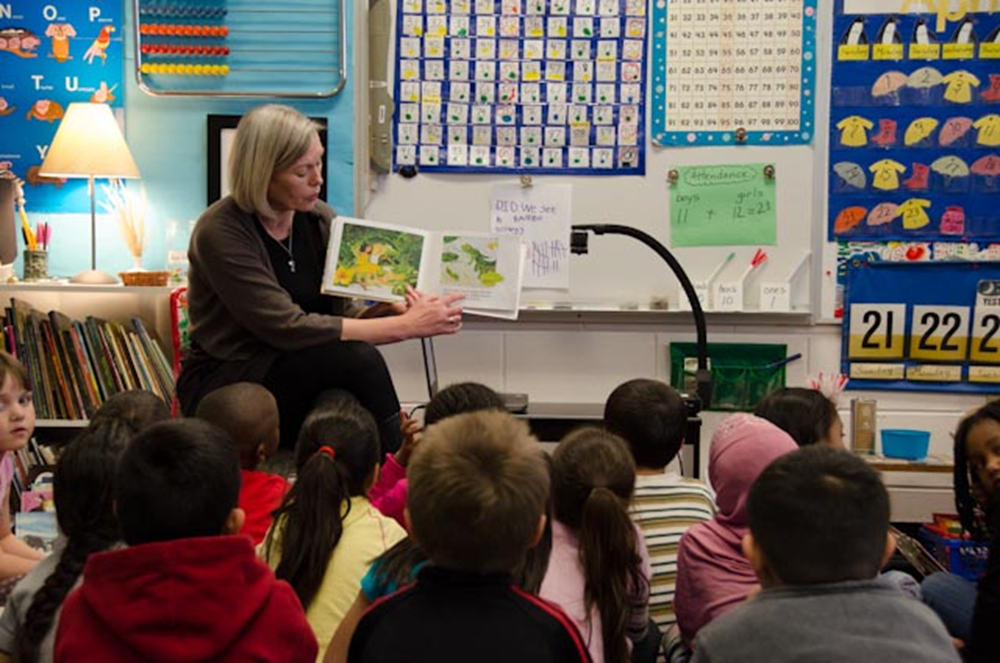
Time went on and I discovered that a number of songs I sang (e.g. “Hush Little Baby”, “Twinkle, Twinkle Little Star”, “Itsy Bitsy Spider”….) were put into print. Many of them had recorded music to accompany them, bringing even more aliveness to the classroom. Why not use these texts as an alternative context to reinforce literacy and ease transitions? As students gathered in front of me, settling in for a writing, reading, or math workshop, it was an opportune time to build oral language, phonological awareness, fluency, reinforce concepts of print (COP) (e.g. left to right progression, voice print match, return sweep etc.), and build community, in a fun, engaging context.
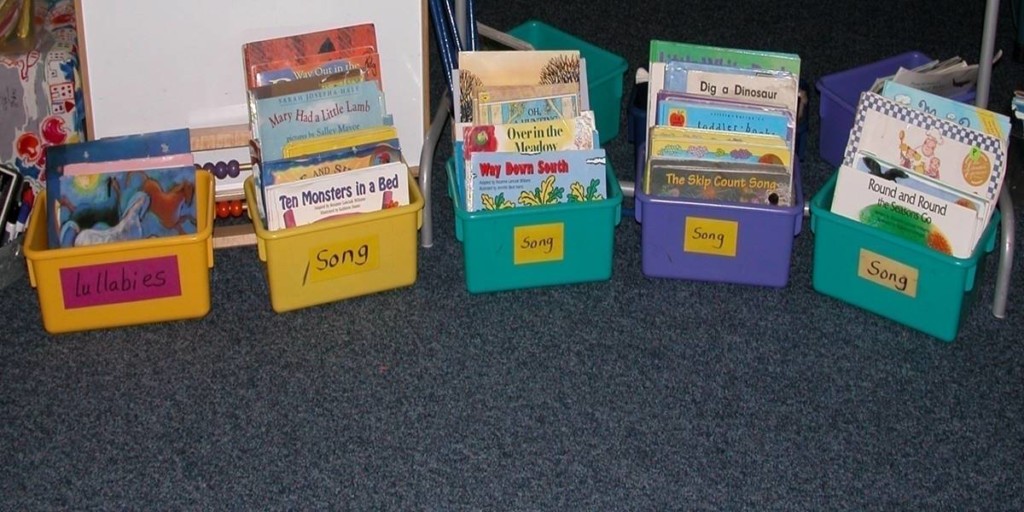
I began building a wealth of song books (see The Literate Kindergarten for suggested titles) and purchasing multiple copies (3-4) so they could be read during Choice Reading providing additional reading opportunities for children. They organically formed small reading groups that were lively, engaging, and full of gusto. Many of these texts became part of their reading stack later in the year when they could read these books on a word level. This was true for the smaller laminated versions of songs/rhymes, as well.
The volume of song books/charted songs/music increased intentionally and purposefully over 30 years of teaching. They became part of our ingrained rituals and were integrated throughout all times of the day.
It’s time to revisit and intentionally capitalize on this seemingly innate love and provide an alternative context to enhance literacy, expedite transitions, and create a warm and inviting context for learning.
